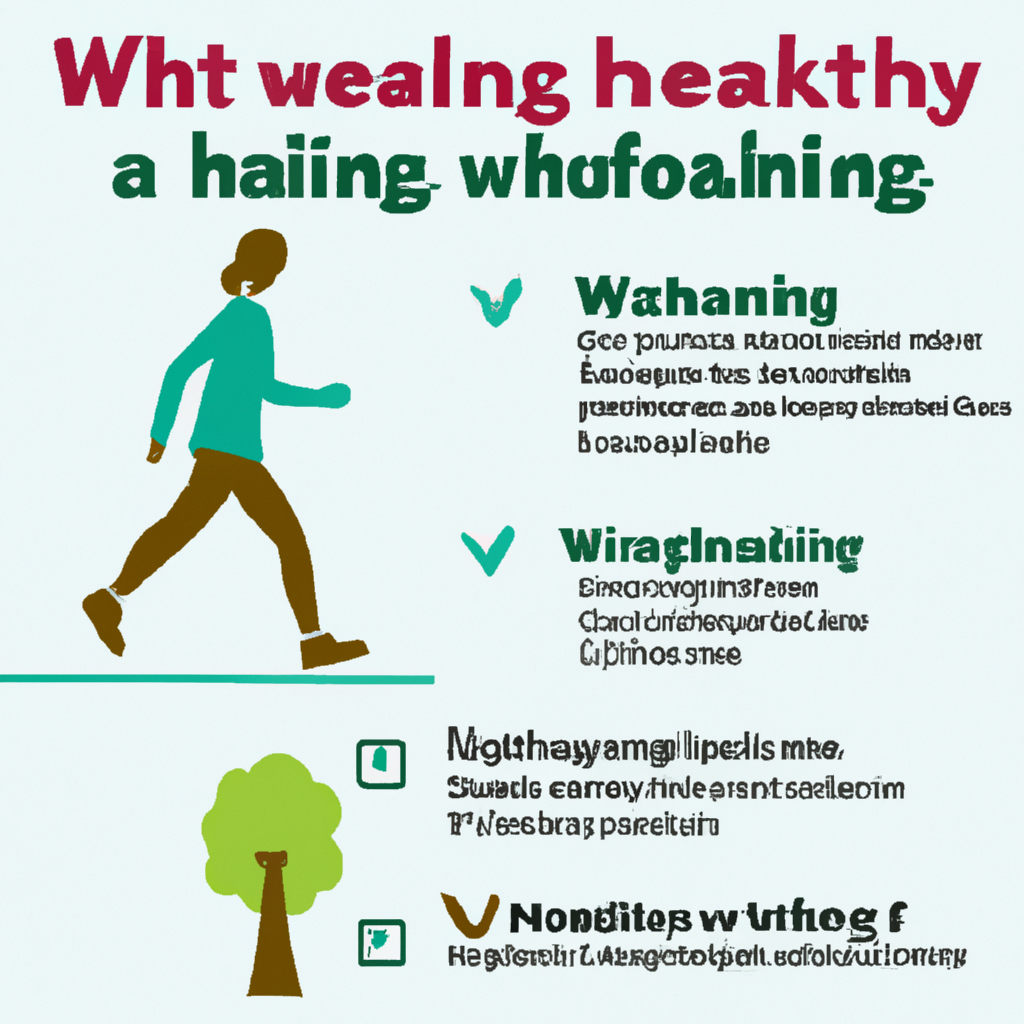As cities are becoming ever more populous, there is an ever-increasing focus on pedestrian health. With more and more people walking for transportation and leisure, everyday pedestrians need to be aware of the potential risks and how to stay safe and healthy. This article will discuss the importance of pedestrian health and provide tips and tricks for staying safe and healthy when out and about.
1. Benefits of Walking for Healthy Living
Walking is one of the easiest and most natural forms of exercise we can do. There are many benefits to be gained from it, both short-term and long-term. Here are some of the key benefits:
- Improved Heart Health: Walking helps to increase your heart rate, which helps to strengthen your heart muscle and reduce the risk of heart disease.
- Weight-loss: Walking can help with weight-loss by burning calories and promoting a healthy metabolism.
- Bone-strengthening: Daily walking can help to improve bone density and stave off conditions such as osteoporosis.
Walking can also help to reduce feelings of anxiety and depression. The physical exercise can help to release endorphins which boost our mood, while being outside and surrounded by nature has been shown to have a calming effect.
In addition, walking has a host of indirect benefits. It can make us feel more energized during the day, help sharpen focus, and improve our sleep. It can also reduce stress levels, helping us to relax and refocus our thoughts.
Overall, walking regularly is a great way to achieve good health and well-being. Not only is walking good for your physical health, it can also provide amazing benefits for your mental health too.

2. Combatting Physical Inactivity with Walking Routines
Regular walking routines can significantly help in combating physical inactivity. Exercise in general helps to stay healthy and fight diseases, and walking is one of the easiest and most economical forms of exercise. Several small adjustments in daily life can add up to a long-term improvement in your physical fitness.
- Start slow: When starting out, it’s important to start slow and make incremental progress over time. Even if you aim for a brisk walk, begin by walking slowly and increase your speed over time.
- Set goals: Take your time and set achievable personal goals. This could be increasing the distance you walk in a session, or the number of sessions in a week. The feeling of success from achieving your goals can be quickly lost if they are unrealistic or too ambitious.
It is also important to be aware of your environment and stay safe while you walk. Wear comfortable clothing and wear reflective material at night.
However, walking routines are not limited to the outdoors. You can use walking treadmills or exercise bikes in your home or at the gym to get that extra bit of work done. Treadmill routines such as HIIT or interval training are a great way to get your blood pumping and your heart rate up.
Using appropriate music while walking can help motivate you and make things more enjoyable. There is a multitude of workout playlists out there, so it’s best to try a few and find the one that is right for you.
Most importantly, be consistent and encourage yourself to stick with your walking routine. Remember that any little steps can be stepping stones to bigger achievements over time.
3. Strategies for Making Your Walks Enjoyable
Music Makes All The Difference
One of the best ways to make your walks more enjoyable is to plug in. Listening to music, an audio book, or a podcast can add a layer of enjoyment and make the time spent more meaningful. Whether it’s a rhythmic beat that helps you get those feet moving or a story that takes you to another place and time during the walk, there’s something for everyone. Not to mention music or a podcast can provide some extra motivation to get on those shoes.
A Change of Scenery
As the saying goes, variety is the spice of life, and it’s never truer if your walking routine needs a pick-me-up. While your daily walks might be in the same location, you don’t have to stick to your routine every time. Explore and discover a new environment or pick a different route through your favorite area. Even small changes to your path can make a big difference and can make the experience more exciting and interesting. Who knows what exciting discoveries lie just around the corner!
Bring Along Friends & Furry Friends
Once you’ve settled into a routine and know your way around, why not try bringing a friend or a four-legged companion? Our walks can often become more interesting and exciting if we can share it with a friend. Or bring along a pup to enjoy the sights and smells around the neighborhood. Dogs can also provide some added motivation to get you and your pup the exercise you both need. It’s a win-win!
Stretch it Out
We all know the importance of a few stretches before getting those feet moving and shaking. While stretching alone won’t necessarily make your walk more enjoyable, it will help prepare your body, and a well-stretched body will have an easier time maneuvering those stones, roots, and other obstacles. It will also hopefully reduce the chance of any injuries while on the trail.
Once you’ve added these strategies to your walking routine, you should find that your walks are not only more enjoyable but have also become a little bit healthier and more fulfilling!
4. The Case for Putting Pedestrians First
The concept of putting pedestrians first is gaining ground in the urban development space. From smaller cities like Santa Monica, to larger metropolises like New York City and Toronto, municipalities of all sizes are starting to recognize the economic and environmental worth of pedestrian-friendly infrastructure and public spaces.
Quality of life: By dedicating resources to pedestrian infrastructure and passage, cities can make a big impact on convenience, safety, and quality of life for citizens and visitors alike. From more attractive streetscapes to easier and safer travel, reallocating the balance of resources to favor pedestrians can create more livable urban environments.
Public health: It’s no secret that urban dwellers often lack adequate access to open public spaces conducive to outdoor activity. As a result, rates of inactivity and obesity can be high. Making the effort to prioritize pedestrians in urban planning increases access to public space for active lifestyles.
Safety: By taking measures to improve pedestrian safety, cities can reduce the number of pedestrian fatalities, serious injuries, and trauma overall. This can be accomplished through street-level design changes such as wider sidewalks, longer pedestrian crossings, and increased pedestrian-focused lighting.
Economic development: Prioritizing pedestrians can also boost economic performance. Not only does successful pedestrian-friendly infrastructure attract coveted businesses and revitalize downtown cores, but it can also encourage economic activity by making engaging walkable street life a reality.
As evidenced by these benefits, there is now a convincing argument for investing in pedestrian infrastructure and public spaces in urban settings. When implemented thoughtfully and equitably, cities around the world have seen the value of putting pedestrians first.
We hope this article has been insightful into the importance of improving pedestrian health, and how smaller changes can have a big impact in achieving this goal. Let’s all work together to create a safe walkable environment for ourselves, and all other pedestrians.




